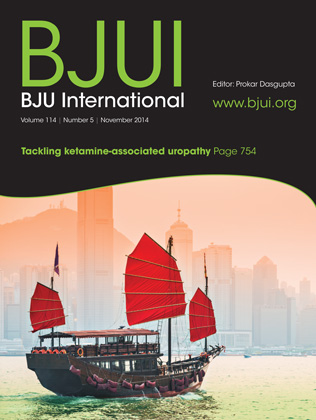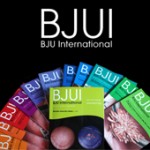Lessons learned from Asian Urology
Glasgow has been in the news a lot this year. The fantastic Commonwealth Games were followed by an excellent Société Internationale d’Urologie (SIU) meeting with its unique Scottish flavour. This month we move our attention to two other nations that have hosted the SIU – China and India. We present two large studies, which are well worth your reading pleasure, not just because of their sheer size but also for their messages and citability.
Since the initial discovery in 2007 of ketamine-associated cystitis by Shahani et al. [1] in Canada, scattered cases had also been reported in some European countries including the UK. However, the gravity of this ketamine problem was subsequently found to be far greater in Asian countries, particularly Hong Kong, Taiwan, Mainland China and Malaysia.
Although ketamine-associated uropathy is a medical problem, it takes root in much deeper social problems, and in turn perpetuates these problems and produces new issues. As the devastating effect of ketamine abuse on the society is unveiled, there are numerous collaborations between Hong Kong and Mainland China to combat it. Government and non-government organisations join hands in educating the public, youths in particular, on the irreversible damage that ketamine can cause to body and mind. More stringent laws have been enacted against drug traffickers, with high-profile enforcements. Abundant funds have also been set up to encourage research in this field.
With all these concerted efforts, according to official statistics in Hong Kong and Mainland China, the number of ketamine abusers is on the decline. However, this is no reason for complacency, as the numbers of abusers we capture probably represent only the ‘tip of the iceberg’. More and more evidence is indicating a substantial population of undiscovered ketamine abusers, who sniff ketamine stealthily at home for years without being noticed by their families.
Any effective solution to ketamine-associated uropathy [2] must involve identifying and extending help to this vast hidden group of abusers. The problem is daunting by its sheer magnitude. There are in addition, delicate issues of privacy, rights and self-esteem that require great sensitivity and patience. It is a job that requires experts from different specialties to cooperate. Urologists must work with social workers, teachers, paediatricians, psychiatrists, psychologists, nurses, occupational therapists and others. Last but not least, parental and family support is paramount in helping our youth to win this fight.
For those endourologists busily treating stone disease we highlight the evolution of shockwave lithotripsy (SWL) over 25 years in >5000 patients [3]. In many parts of the world, not just Asia, extracorporeal SWL (ESWL) has seen a drop in its popularity in parallel with an increase in the use of percutaneous nephrolithotomy (PCNL) and ureteroscopy. Patients seem to be more inclined to be stone-free with fewer interventions even if these are of an invasive nature.
For those readers more interested in immediacy through our web journal, the Best of China virtual supplement is the one not to miss. There have been many calls for a BJUI Android app from our friends in the East. We are almost there!
Peggy Sau-Kwan Chu and Prokar Dasgupta*
Division of Urology, Department of Surgery, Tuen Mun Hospital, Hong Kong *King’s College London, Guy’s Hospital, London, UK
References
1 Shahani R, Streutker C, Dickson B, Stewart RJ. Ketamine-associated ulcerative cystitis: a new clinical entity. Urology 2007; 69: 810–2
2 Tam YH, Ng CF, Pang KK et al. One-stop clinic for ketamine-associated uropathy: report on service delivery model, patients’ characteristics and non-invasive investigations at baseline by a cross-sectional study in a prospective cohort of 318 teenagers and young adults. BJU Int 2014; 114: 754–60
3 Jagtap J, Mishra S, Bhattu A, Ganpule A, Sabnis R, Desai M. Evolution of shockwave lithotripsy (SWL) technique: a 25-year single centre experience of >5000 patients. BJU Int 2014; 114: 748–53




Congratulating Tet Yap, Scott, Helena and our design team on probably the best cover of 2014